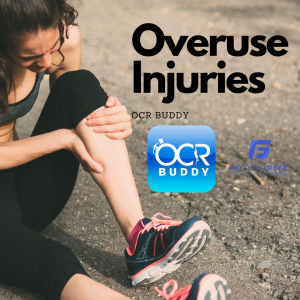 Overuse. Is this really a thing?
Overuse. Is this really a thing?
Have you ever experienced an injury somewhere and been told by a medical professional that it was due to overuse? Most likely, the answer is yes, because it is used as the cause way too often for anything that is a chronic-type onset.
When that happens, you accept it as an answer because it makes sense, right? You have been putting a lot of time in training and so of course it would be overuse. Because of that, you follow orders: rest, take anti-inflammatory medication, stretch. And…it all comes back again!
Well, guess what? Contrary to popular belief, Overuse is not really a thing! Along with that, rest, medication, and stretching rarely, if ever, solve an injury problem.
If overuse was a legitimate cause for an injury, then every racer would have the exact same injury and we would not see athletes being able to do ultra-distances without experiencing constant injuries.
So, if overuse is not the actual cause, what is?
What is often deemed as overuse is essentially increased forces/stresses on an area of the body due to how the body is moving. With good mechanics, our bodies can withstand a lot. With faulty mechanics, not so much! Over time, the body breaks down which results in an injury. The way to resolve overuse injuries isn’t by simply resting and letting the tissues calm down. The way to resolve these injuries is by actually getting to the root cause and addressing that.
The causes of the faulty mechanics are many: strength deficits, mobility deficits, muscle imbalances, compensations, technique faults.
I also cannot leave out the other factors that people often neglect to think about with many of these chronic injuries: sleep, stress, nutrition, hydration, emotional and mental health. Everything impacts how our tissues respond to the stresses of training and how those tissues recover.
Determining what is causing your injury is not determined simply by telling with a medical professional about your symptoms, having that professional assess your range of motion and strength, palpate an area to confirm there is tenderness, etc. That all works great to confirm there is an issue in the specific tissues, but that’s it.
Finding the root cause is done by assessing how your body is moving and uncovering where you are compensating or where your movement is falling apart. Then it is a matter of solving the very complex puzzle, which often involves peeling back the many layers of compensations and imbalances your body has.
Along with the fixing the movement cause, if you do not address the lifestyle contributors as well, the injuries may continue to stick around. They truly do impact how your body recovers and heals!
It is time to stop believing the catch all categories medial professionals like to put injuries into and instead start finding answers that will actually fix your problem…for good! It’s time to get rid of the bandaid treatments often given to treat the symptoms. Only then will you be able to get rid of your pain now and keep it gone forever.
Written by Brianne Showman. Brianne is a physical therapist and running coach with Get Your Fix Physical Therapy And Performance. Her focus is on helping athletes resolve injuries in less time by getting to the root of the problem, improving movement patterns, and incorporating proper training to help the body to move more efficiently, more powerfully, and in less injury-prone ways.









